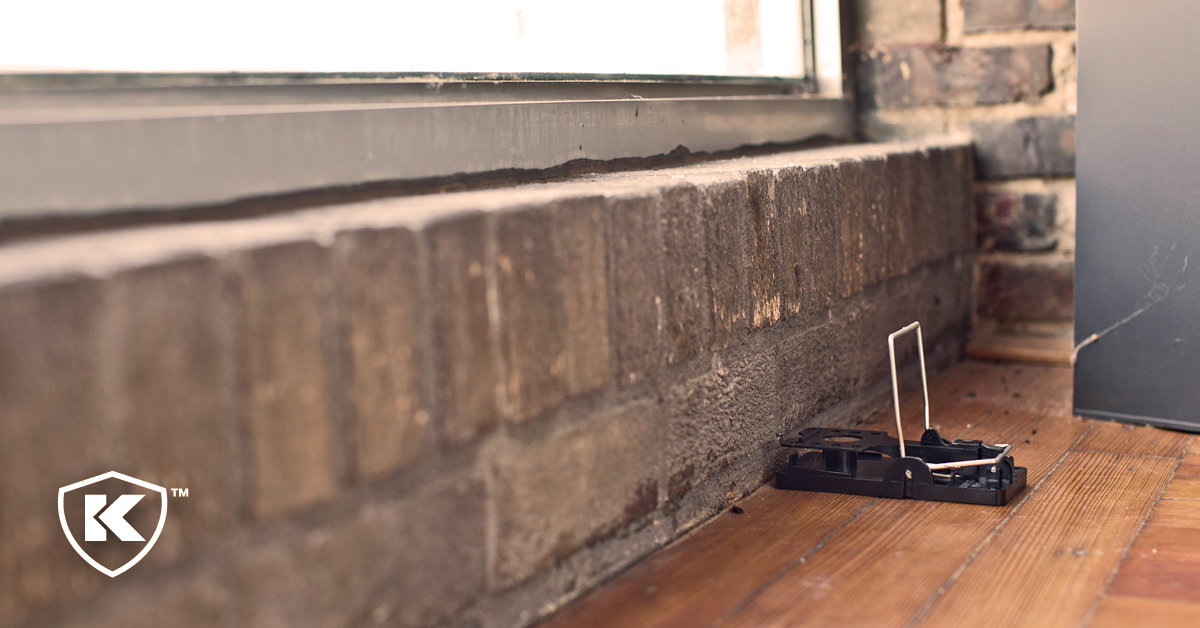Quick Tips On How To Trap A Rat

Trapping is the safest and most effective method for controlling rats in and around homes, garages, and other structures. Rats can pose a significant health risk and damage structures and infrastructure. To manage rat problems and infestations, here are some trapping tips for a better chance of capture.
Do Some Rat Recon, Know Your Enemy
Before putting up traps, it’s important to understand how big of a rat problem you have. There’s a significant difference between trying to deal with a single rat versus a large rat infestation. Since rat populations can grow quickly, finding evidence of rat problems early on makes control a more manageable task. Some signs that you might be dealing with a rat infestation include:
- Sounds of squeaking, scratching, and rustling
- Begin noticing an ammonia smell
- See chew marks on power cords, food storage containers, or material such as newspapers, magazines, mail, etc.
- Notice rat droppings that are 7-19mm long and have more rounded ends
- Observe dark marks along baseboards and walls (rats leave greasy residue from fur)
- Find footprints in areas that haven’t been dusted in a while
Arm Up With The Right Traps
Rats are cunning and weary rodents. To eliminate the problem, you either need to capture them with a fast-acting trap or use a solution that ensures the target pest stays caught. That’s where snap traps and glue traps come into the picture. Kness Pest Defense has a number of simple-to-use rat trapping solutions that accomplish these tasks, such as:
Snap traps are the traditional form of capturing rats. These involve utilizing bait placed on a spring-loaded trapping mechanism that kills rats in one swift movement. Glue traps (a.k.a. sticky traps) lure rodents into an area where there’s a strong adhesive.
Set Up Your Traps
To achieve a better likelihood of capture with snap traps, you need to have a trap-setting game plan. Rats are cautious by nature. The location in which you set the traps helps determine the success you will have with them. Start by setting traps with the bait facing the wall to capture rats as they walk along the baseboards. Use multiple traps in your attempts to capture the rodents. For bait, use a long-lasting food such as peanut butter.
Whenever you set up traps, whether the Kness Big Snap-E or Stick-All, it’s best to wear gloves and apply the bait with kitchen utensils. The reasons for this are simple. Rats are generally afraid of human smell and can often detect it from the oil left by fingerprints. If you do happen to touch a trap with your bare hands, wash it off with hot water before setting it. While fingerprints won’t render traps ineffective, your chances of trapping a rat improve when your scent is absent from the trap itself.
Rats are very cautious creatures. Any new obstacles in their path can cause concern for them, and they may avoid or test it. The most successful strategy to help the rats feel comfortable is to prebait the traps. This involves putting the traps with a food attractant in areas where you find rat evidence while leaving them unset for a couple of days until the attractant has been removed multiple times. Then add the bait again and set the traps this time around.
If you are using glue traps, one prebaiting option is to leave the protective film on the glue board for a few days, then remove the film when you are ready to begin trapping. Overall, adding these glue boards alongside your snap-trap strategy can go a long way in getting capture results.
Check Your Traps
Check traps regularly (every few days) and adjust trap location if no activity is observed. Again, wear gloves when resetting or adding more bait. Be sure to clean your hands after checking the traps.
Dispose of Rats Properly
When you capture a rat, use gloves when handling snap traps or glue traps. Dispose of the rodent from the trap (or in the case of the glue trap, throw it all away), double bag it and put it in the trash. Many municipalities do not allow for the disposal of carcasses in municipal waste, so be sure to consult your local ordinances before removal.
Clean Used Traps
For snap traps, clean them after each capture. An added benefit of plastic traps, like the Kness Big Snap-E, is that they are much less susceptible to staining than conventional wooden traps.
For more helpful pest tips and solutions, visit Kness.com/Pest-Control-Center.